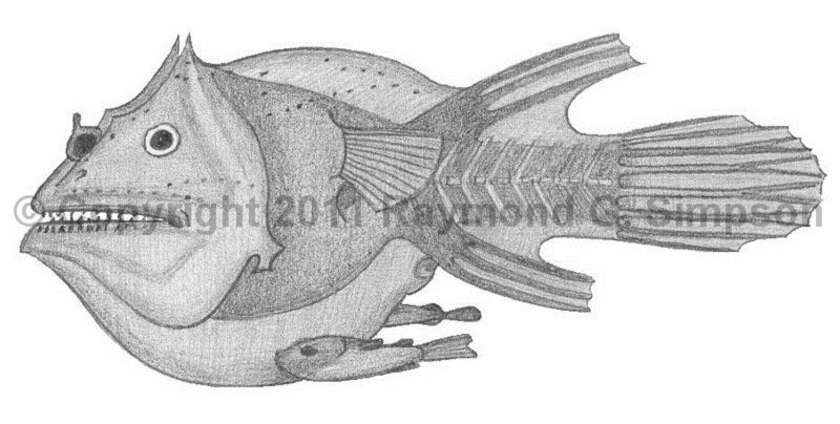
Common Name
Ghostly Seadevil
Year Described
Brauer, 1902
Identification
Dorsal Fin: 3 (rarely 4)
Anal Fin: 3 (rarely 4)
Pectoral Fin: 15-16
Caudal Fin: 2 simple + 4 branched + 3 simple (last short)
Branchiostegal Rays: 5 (rarely 4)
Females: Body nearly globular with a huge head. Mouth large and oblique with small teeth in several rows. Vomerine teeth absent. Eye well developed. Head with strong sphenotic spine. Spines on quadrate and articular absent. A strong spine with multiple tips on preopercular edge. Illicium absent, with pterygiophore almost completely buried in skin of head. Esca a large bulb perched on snout. Distal appendage absent or short. Posterior appendage very short with some filaments depending on size. Hyoid barbel absent. Pectoral fin small and inserted high on body beyond midpoint. Dorsal and anal fins far back near caudal fin base. Caudal fin has simple and branched rays. Skin completely smooth (lacks spinules, bristles, or bucklers). Vent on left side of body (unique to family).
Males: tiny and parasitic (females can have multiple attachments). Body elongated. Olfactory organs well developed. Barbels absent in adults. Jaw teeth absent in free living males.
Color
Body a ghostly translucent white with internal organs and bones visible through body wall. Eye black.
Size
Females range from 13-159mm SL. Males range from 8-15mm SL.
Habitat
Deep midwater mostly from 550-2000m.
Range
Known from Canadian waters to the Gulf of Mexico and Caribbean Sea. Also off eastern Brazil and in the central Atlantic. Known worldwide in all oceans.
References
Pietsch, T.W. 2009. Oceanic Anglerfishes: Extraordinary Diversity in the Deepsea. University of California Press. 557pp.